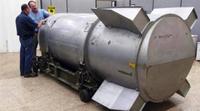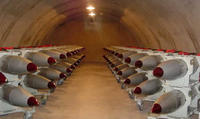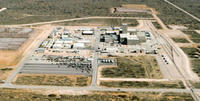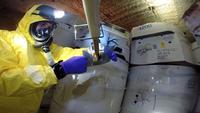-
Iran letter may be a failed experiment or a sign of things to come
Senator Tom Cotton (R-Arkansas) sparked a political firestorm with his 9 March open letter to the leaders of Iran, co-signed by forty-six of his colleagues. The letter warns Iranian negotiators that President Obama’s successor could cancel any agreement with the United States not approved by the Senate as a formal treaty. Cotton’s observations on U.S. treaty law are facile at best, the stuff of an elective constitutional law course. It is not the substance that has rankled so many Washington observers, however, it is the form. Many described the letter as a “breach of protocol,” as if it has been out of institutional politesse that members of Congress have historically refrained from this kind of direct communication with foreign leaders. That understates the case considerably. Established constitutional doctrine holds that presidents have exclusive authority to engage foreign governments on the nation’s behalf. If this principle – sometime called John Marshall’s “sole organ” doctrine, after Chief Justice Marshall – is not followed, and if politics does not stop at the water’s edge, the result will be a free-for-all foreign policy, a scaling up of the polarization already endemic to domestic politics. No one should welcome the prospect, but it may become a fact of life. Expect presidents to up the ante by taking more aggressive unilateral measures, further reducing the possibility of inter-party cooperation. The 9 March letter may be a peek at a new kind of politics beyond the water’s edge, requiring new kinds of navigation.
-
-
Obama: Deal depends on Iran agreeing to a verifiable 10-year freeze on nuclear activity
President Barack Obama said yesterday (Monday) that Iran must commit to a verifiable freeze of its nuclear activities for at least ten years in order to make a nuclear deal possible. He said that there are still considerable gaps between the position of Iran and that of the P5+1 group, and that the odds were still against reaching an agreement. He said there was a “substantial disagreement” between his administration and the government of Israel over how to achieve their shared goal of preventing Iran from acquiring nuclear weapons. The goal of the United States is to make sure “there’s at least a year between us seeing them try to get a nuclear weapon and them actually being able to obtain one,” Obama said.
-
-
New document details U.S.-Iran cyber tit-for-tat
Just as U.S. Secretary of State John Kerry and his Iranian counterpart discuss plans to ensure Iran does not weaponized its nuclear program, a newly disclosed National Security Agency (NSA) document details the intensifications of cyber skirmishes between the two countries. While the document does not describe the specific targets in Iran, it acknowledges, for the first time, that the NSA’s attacks on Iran’s nuclear program, a George W. Bush administration project, initiated the cycle of retaliation and escalation of the U.S.-Iran cyber conflict.
-
-
U.S. curbing intelligence sharing with Israel as discord over Iran talks deepens
As a result of the growing tensions between the United States and Israel, and what the United States views as an improper use by Prime Minister Benjamin Netanyahu of sensitive information regarding the nuclear negotiations between the P5+1 and Iran, the White House last week begun to limit the scope, quality, and depth of the information it shares with Israel regarding the talks with Iran about the Iranian nuclear program. A senior Israeli official said that U.S. representatives continue to meet with and update their Israeli counterparts, but are passing on information about the talks “at a lower resolution.”
-
-
Mystery surrounding Argentinian prosecutor’s death deepens
Iranian intelligence operatives, using Hezbollah and Islamic Jihad agents, plotted and carried out two massive bombings in Buenos Aires twenty years ago: In 1992 a bomb destroyed the Israeli embassy, killing twenty-nine and injuring 242. In 1994, a powerful car-bomb exploded outside a Jewish Federation building, killing eighty-five and injuring 150. Former president Carlos Menem is already facing charges of being bribed by Iran to help hide the involvement of Iranian officials and their local accomplices in the two attacks. Alberto Nisman, a federal prosecutor investigating the involvement of the current president, Cristina Fernandez de Kirchner, in the cover-up, announced that a 320-page report he had prepared, and a large volume of supporting evidence, conclusively proved that Fernandez and her foreign minister,Héctor Timerman, negotiated a secret deal with Iran to keep Iran’s responsibility for the early 1990s’ attacks under wraps in exchange for a lucrative grain-for-oil deal. A day before Nisman was to present his findings to the Argentine parliament, he was found dead in his apartment.
-
-
Boomerang: Democrats say they would delay vote on Iran sanctions bill
Senator Robert Menendez (D-New Jersey) announced during a Senate hearing yesterday (Tuesday) that he and other Senate Democrats would not support bringing the sanctions bill he cosponsored with Senator Mark Kirk (R-Illinois) to the floor until at least 24 March. Menendez has led a small group of Democrats who were critical of the administration’s handling of the talks with Iran over the latter’s nuclear program talks. The bi-partisan approach to the sanctions issue collapsed in the face of what Democrats considered to be a clumsy politicization of the issue by Speaker John Boehner (R-Ohio), Israel’s prime minister Benjamin Netanyahu, and Israel’s ambassador to the United States, Ron Dermer. Dermer suggested to Boehner the idea of inviting Netanyahu to speak in front of Congress to criticize the administration’s policy. Netanyahu is lagging in the polls behind the center-left camp in the 17 March parliamentary elections in Israel, and Dermer, one of Netanyahu’s closest political advisers, believed the speech would boost Netanyahu’s standing in Israel. The process of the invitation was not less problematic than the invitation itself: In an unprecedented break with protocol, Boehner and Dermer did not bother to consult with, or even inform, the White House or the Department of State that they were arranging for a foreign head of state to speak before Congress.
-
-
U.S.-Russian nuclear security cooperation victim of growing bilateral tensions

One of the greatest benefits brought about by the end of the cold war was the agreement been the United States and the former Soviet republics to cooperate closely in securing the large, and not-always-well-protected, Soviet nuclear stocks. The 1991 Cooperative Threat Reduction agreement, aka the Nunn-Lugar program after the two former senators — Sam Nunn [D-Georgia] and Richard Lugar [R-Indiana]) — who persuaded fellow lawmakers to fund it, has facilitated to achievement of important security measures: dismantling of thousands of nuclear warheads, securing facilities in Russia where weapon-grade material is stored, and finding suitable jobs for tens of thousands of Russian nuclear scientists, engineers, and technicians. More than two decades of cooperation in guarding weapons-grade stockpiles have now come to an end, the result of tensions over Russia’s role in Ukraine. Experts say the end of U.S.-Russia nuclear cooperation leaves the world “a more dangerous place.”
-
-
One million curies of radioactive material safely recovered
Experts at the Los Alamos National Laboratory (LANL) helped the Department of Energy’s (DOE) Off-Site Source Recovery Project (OSRP) recover more than one million curies of radioactive sources since 1999. LANL says that the accomplishment represents a major milestone in protecting our nation and the world from material that could be used in “dirty bombs” by terrorists. “Taking disused, unwanted and, in limited cases, abandoned nuclear materials out of harm’s reach supports the Laboratory’s mission of reducing global nuclear danger,” said Terry Wallace, principal associate director for global security at Los Alamos.
-
-
U.S. Army seeking to end environmental testing at Indiana nuclear firing range
The U.S. Army wants to end its Nuclear Regulatory Commission (NRC) license at the Jefferson Proving Ground in southern Indiana. The Army’s appeal comes after years of water and soil testing at the site. Currently, an estimated 162,040 pounds of depleted uranium projectiles and shows are still on the firing range. The site was last used in 1995. Uranium munitions, specifically the kind used to penetrate armor during Operation Desert Shield, were used there throughout the 1980s and 1990s.
-
-
Studying the long-term aging of electronics in nuclear weapons

Sandia National Laboratories is studying how environments, including radiation which originates from a nuclear weapon itself, could affect the performance of electronics in the W76-1 warhead as they age. Researchers have studied radiation effects since the early days of nuclear weapons, but a 30-year program, which begun in 2006, will provide real-time data for the first time on how electronics age within the weapon. Studies in the past used techniques that artificially accelerated the aging process based on a range of assumptions resulting from experiments and previous research.
-
-
U.S. nuclear arsenal must be upgraded to maintain effective deterrence: Experts

Former military officers, academic strategists, scientists, and congressional leaders have recently been calling for the development of new nuclear weapons to replace the nation’s older, outdated stockpiles. Twenty-five years since the cold war ended, the U.S. nuclear arsenal has been significantly reduced to its current level of 4,804 nuclear weapons — from a peak of 31,000 weapons in 1967.As cooperation with Russia deepened in the 1990s, U.S. weapons complexes deteriorated. A recent “60 Minutes” story on the U.S. nuclear forces found that missileers charged with watching over and controlling Minuteman III ICBMs in Wyoming were still using floppy disks to store critical information. One expert arguing for shoring up and upgrading the U.S. nuclear deterrence says that “one of the reasons deterrence is so valuable is that it provides incentives for self-discipline in the behavior of states that otherwise cannot be trusted to behave peaceably.”
-
-
Scientist develops uncrackable security code for nuclear weapons
Nuclear weapons exist, so control of nuclear weapons is essential. Intrinsic Use Control (IUC) is a concept which is capable of providing improved quantifiable safety and use control within a nuclear weapon. As a basic concept, use control is best accomplished in the weapon itself rather than depending on administrative controls, fences, and guards. Using established technology, IUC uses passive use control to resist any attacks or unauthorized use of a weapon at either the component or the fully assembled levels.
-
-
U.S. planning expansion of nuclear production in the face of safety concerns

Despite the release of a damning report regarding the 14 February nuclear waste accident at the Waste Isolation Pilot Plant (WIPP) near Carlsbad, New Mexico by the U.S. Department of Energy (DOE), the government is planning ramped-up production of nuclear weapons cores, a move which is raising red flags for those calling for reform of nuclear production and storage procedures.
-
-
Transparent nanoscintillators for radiation detection in homeland security, medical safety
Researchers say recently identified radiation detection properties of a light-emitting nanostructure built in their lab could open doors for homeland security and medical advances. The researchers describe a new method to fabricate transparent nanoscintillators by heating nanoparticles composed of lanthanum, yttrium and oxygen until a transparent ceramic is formed. A scintillator refers to a material that glows in response to radiation.
-
-
A second drum at nuke waste repository poses radiation leak danger

At a recent meeting of the New Mexico Legislature’s Radioactive and Hazardous Materials Committee in Carlsbad, officials were informed that a second waste drum containing nuclear materials, could also contain the same mix of ingredients as the waste drum from Los Alamos National Laboratory (LANL) which caused a radiation leak at the Waste Isolation Pilot Plant (WIPP) in February.
-
- All
- Regional
- Water
- Biometrics
- Borders/Immig
- Business
- Cybersecurity
- Detection
- Disasters
- Government
- Infrastructure
- International
- Public health
- Public Safety
- Communication interoperabillity
- Emergency services
- Emergency medical services
- Fire
- First response
- IEDs
- Law Enforcement
- Law Enforcement Technology
- Military technology
- Nonlethal weapons
- Nuclear weapons
- Personal protection equipment
- Police
- Notification /alert systems
- Situational awareness
- Weapons systems
- Sci-Tech
- Sector Reports
- Surveillance
- Transportation
Advertising & Marketing: advertise@newswirepubs.com
Editorial: editor@newswirepubs.com
General: info@newswirepubs.com
2010-2011 © News Wire Publications, LLC News Wire Publications, LLC
220 Old Country Road | Suite 200 | Mineola | New York | 11501
Permissions and Policies
Editorial: editor@newswirepubs.com
General: info@newswirepubs.com
2010-2011 © News Wire Publications, LLC News Wire Publications, LLC
220 Old Country Road | Suite 200 | Mineola | New York | 11501
Permissions and Policies
